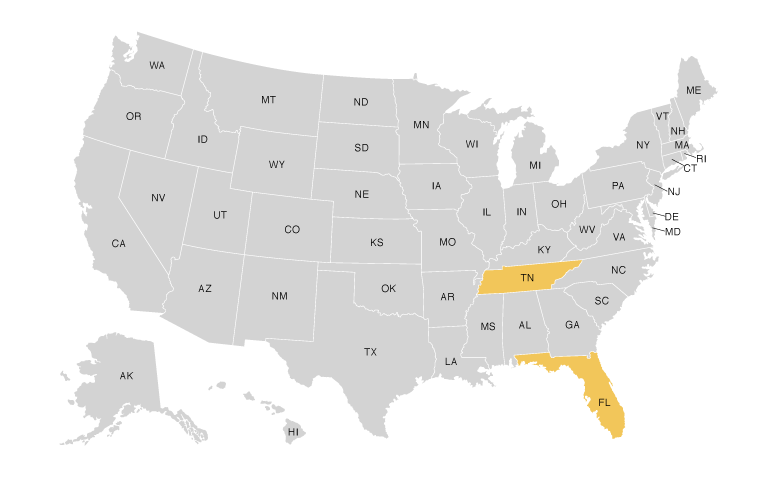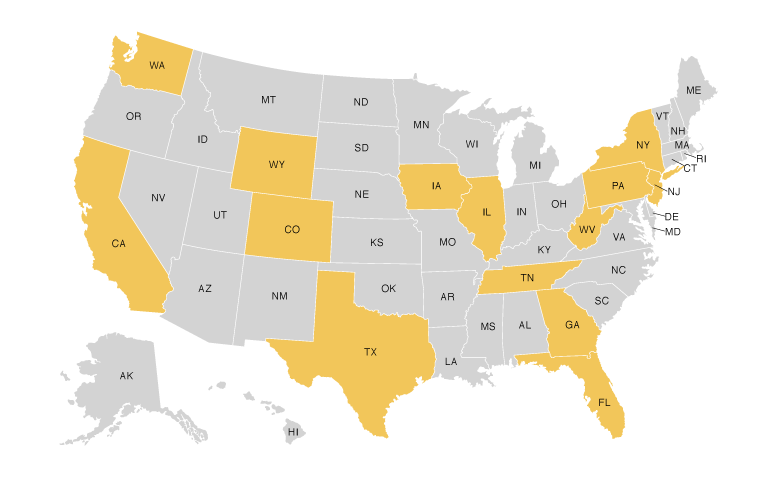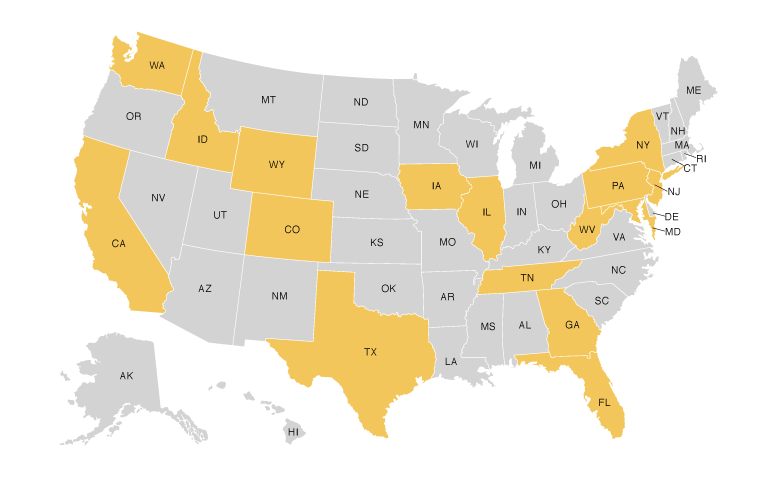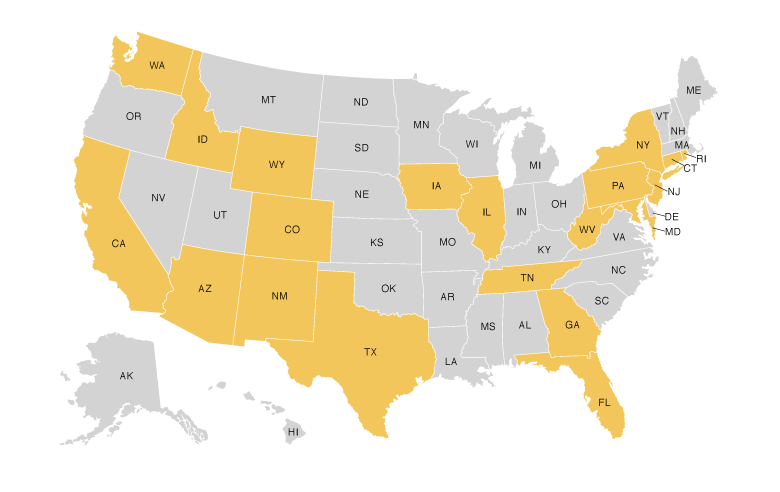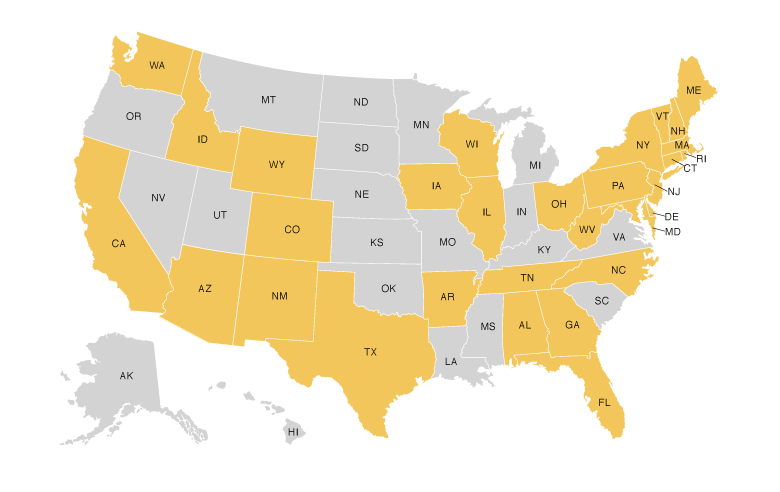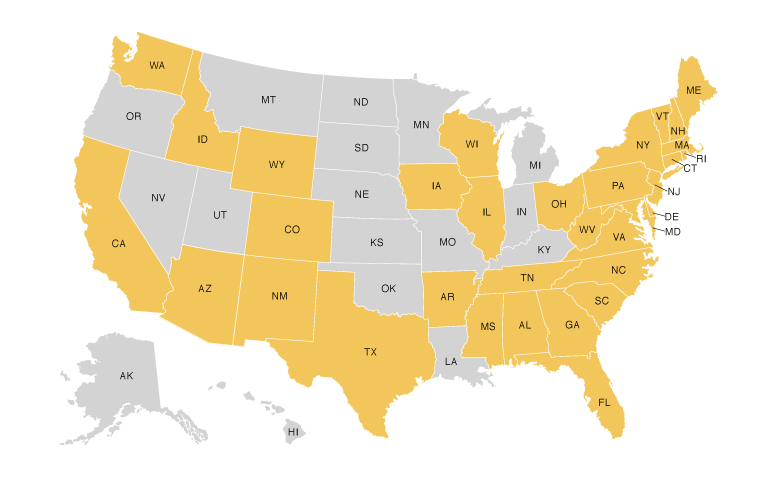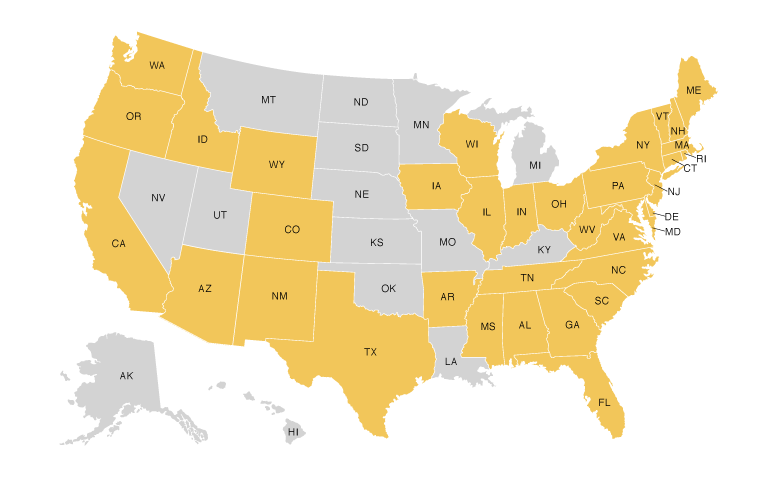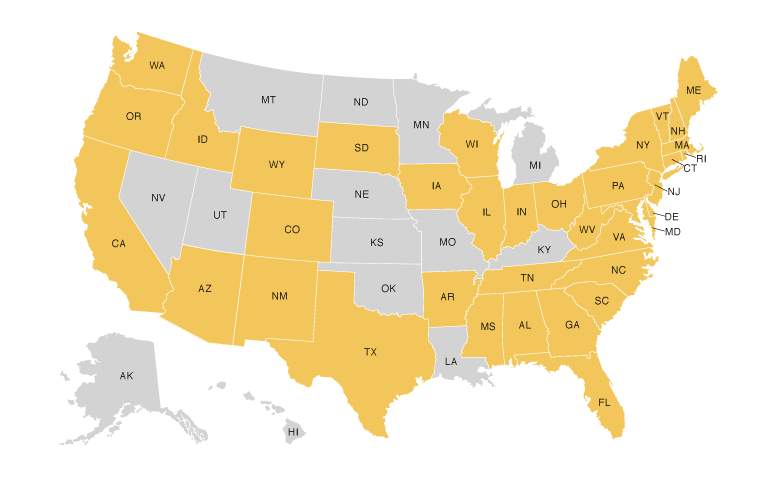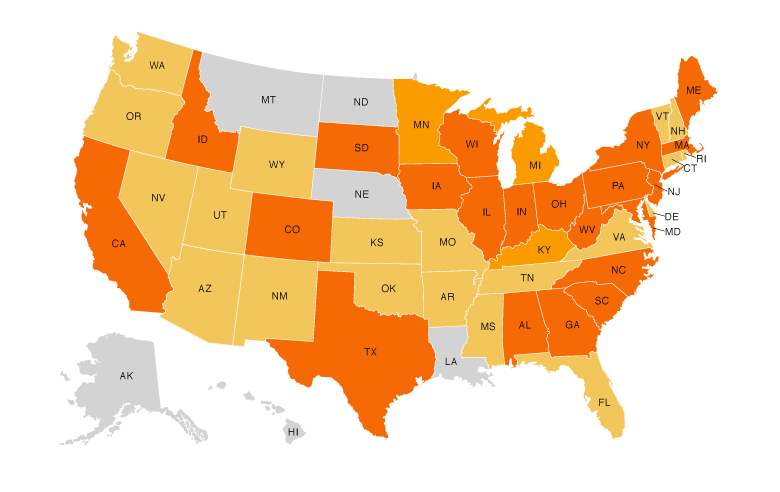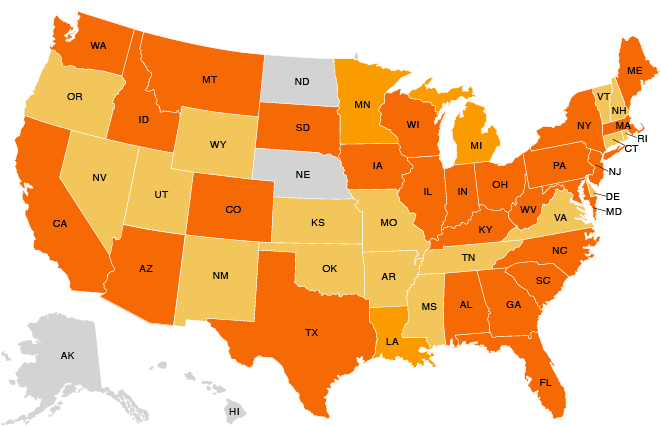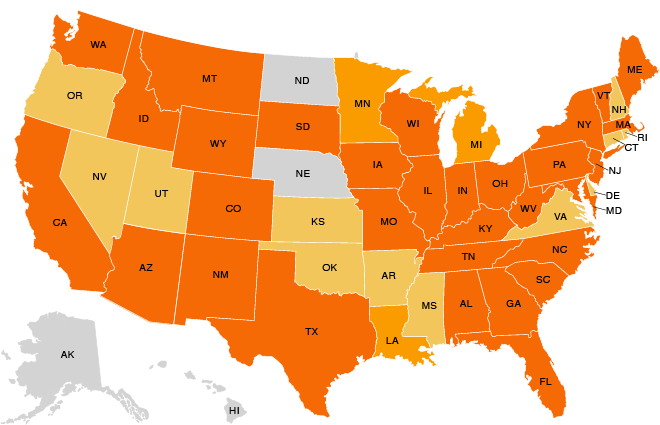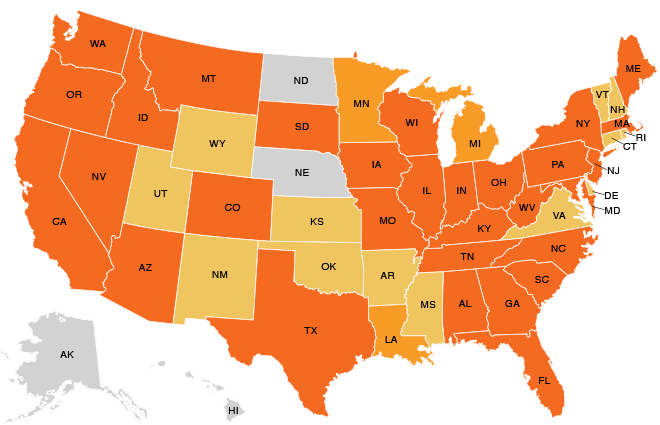Dog flu, also known as canine influenza virus (CIV) knows no boundaries. This highly contagious disease began as an isolated episode of respiratory disease in Florida in 2004, and has now become a nationwide health concern for all dogs. Almost every dog is at risk of this highly contagious respiratory virus. From dog park friends to short walks alone, the amount of risk depends on you and your dog’s lifestyle and habits. Even the most introverted dogs can be at risk.
As of October 2017, the Canine Influenza Virus has Been Confirmed in 46 States
 H3N8 strain only
H3N8 strain only H3N2 strain only
H3N2 strain only Both strains
Both strainsHistory of the H3N8 Strain of Dog Flu
Dog flu was first recognized by University of Florida researchers and Cornell University virologist working with the Center for Disease Control and Prevention following an outbreak of severe respiratory illness at a Greyhound racing facility Florida. In January 2004, eight of twenty two dog had died due to extensive hemorrhage in the lung. Fortunately, this was a small outbreak due to the rapid institution of containment measures. Since that time however, dog flu has been identified throughout the United States.
In July 2004, dog flu was diagnosed in a Greyhound that died at a track in Texas. The virus isolated was virtually identical with the H3N8 virus identified in Florida and confirmed the link of H3N8 to equine influenza. After the 2004 outbreak, retrospective testing of archived lab samples was conducted, which indicates that the virus infected dogs as early as 1999. The 2004 outbreak in Florida was the “canary in the mineshaft” that alerted veterinary researchers and professionals to the condition.10
From this time, documented outbreaks have confirmed the spread of the virus to the general population. In May 2009, cases of dog flu had been confirmed in 30 states. Since 2009, 13 more states have documented cases, and the virus continues to spread. Every continental state except one has either had a confirmed case of dog flu, or borders on a state that has.
History of H3N2 Strain of Dog Flu
In March 2015, a severe outbreak of respiratory disease affecting over 1,000 dogs in the Chicago, IL area was documented. Merck Animal Health supported the testing of over 450 dogs at that time. The samples were sent to Cornell University’s Veterinary Diagnostic Laboratory and 158 dogs were diagnosed with dog flu.
Shortly thereafter the virus was typed as canine influenza virus H3N2, which had never been isolated previously in the US. The virus is of avian origin and closely related to the South Korean canine influenza H3N2 strain. As of June 2017, this virus had spread to 31 states.
Considerations For Your Pet
Dogs have no natural immunity to dog flu because it is a newer virus. This virus is easily spread by mobile dogs, like rescue dogs or ones that travel and move with their owners. This is how dog flu has spread from state to state. Many dogs are boarded, go to daycare, or visit grooming facilities where close contact to other dogs puts them at high risk.
Dog Flu Spreads Easier When They’re Social
- Direct contact: when dogs kiss, lick or nuzzle each other
- Through the air: from a cough or sneeze
- Contaminated objects: doggie bowls, toys, doorknobs or clothing
- Human touch: hands of pet owners, veterinary clinic staff or shelter workers
Prevention Keeps Them Safe
To ensure the health and safety of all pet’s entrusted to our care, CIV vaccinations are mandatory at K9 Club.
